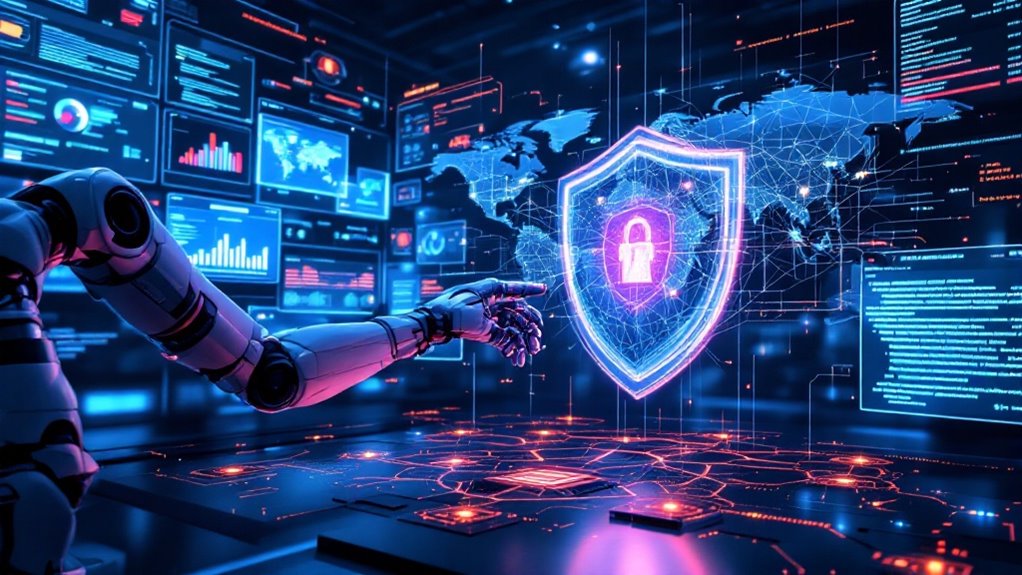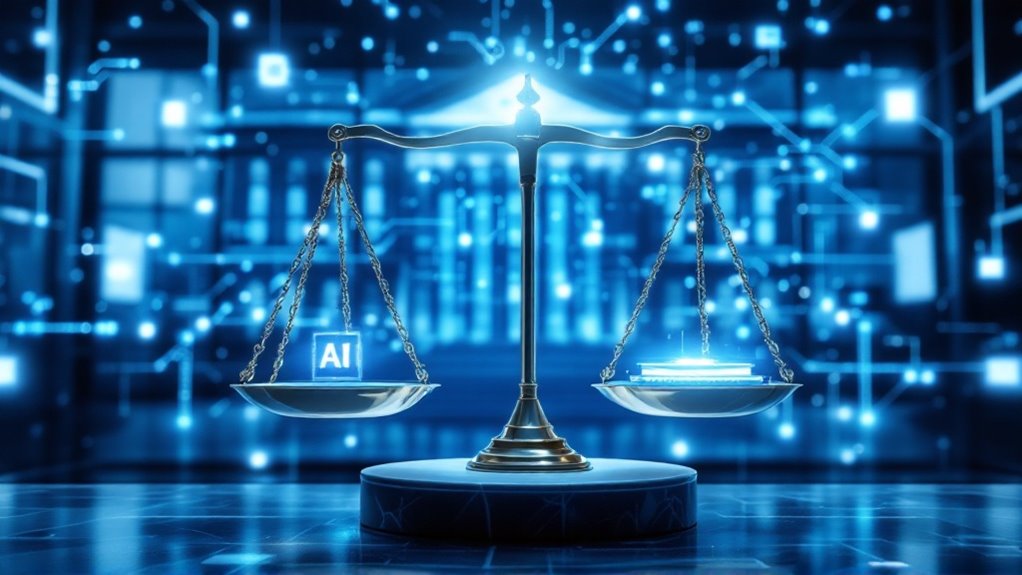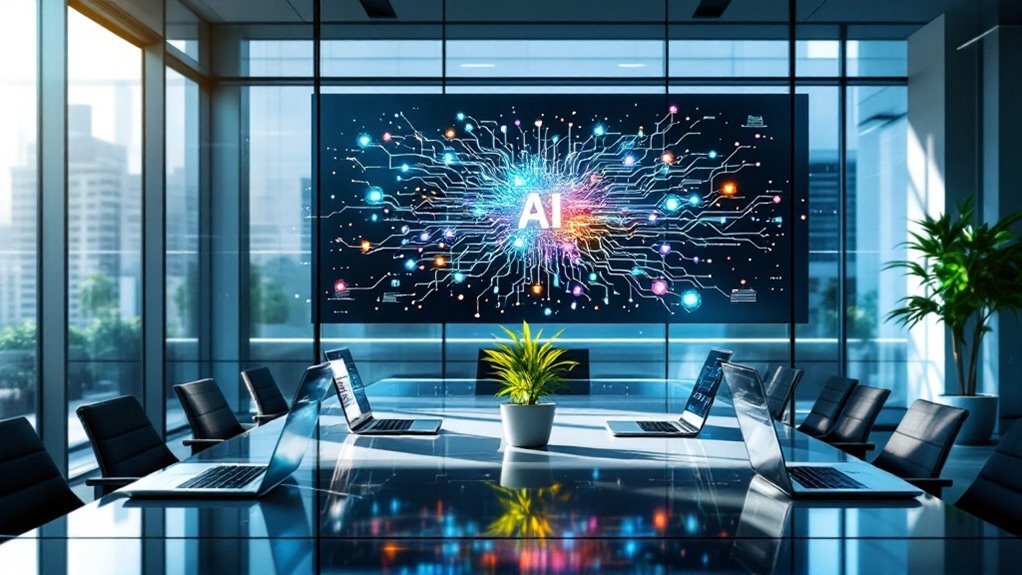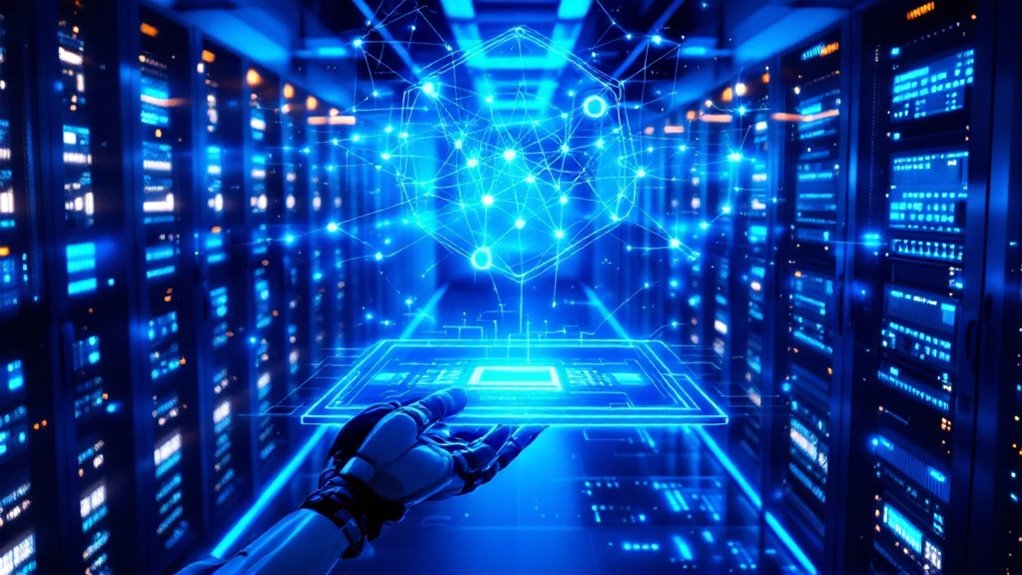AI is revolutionizing cybersecurity by shifting from reactive to predictive defense. Systems now process trillions of signals daily, identifying vulnerabilities before exploitation and responding automatically to threats while human analysts are still reaching for coffee. These digital guardians create elaborate honeypots, run 24/7 without holiday requests, and are developing self-healing capabilities to fix vulnerabilities automatically. The cybersecurity chess match is evolving—and the machines are making some impressive moves.
Countless security professionals are witnessing a seismic shift in how digital defenses operate as artificial intelligence rewrites the cybersecurity rulebook. Gone are the days when security teams manually sifted through endless logs like digital archaeologists. Microsoft now processes a mind-boggling 78 trillion security signals daily using AI—that’s more data than most humans could analyze in several lifetimes, folks.
The game-changer? AI doesn’t just react to threats; it predicts them. Think of it as the cybersecurity equivalent of “Minority Report,” minus the creepy precogs floating in goo. Generative AI identifies vulnerabilities before hackers can exploit them, creating a proactive shield rather than the digital equivalent of closing the barn door after the horse has bolted.
AI doesn’t wait for attacks—it anticipates them, creating digital shields before hackers even make their move.
When threats do materialize, AI-powered systems respond with superhero-like speed. Systems get isolated, malicious traffic blocked, and compromised devices rolled back to secure states—all while human analysts are still reaching for their coffee. These automated responses dramatically reduce attacker dwell time, limiting potential damage.
The intelligence game has evolved too. AI processes diverse data sources and generates real-time insights about emerging threats. It’s like having thousands of security researchers working for you 24/7, without the hassle of holiday requests or office snack theft.
Perhaps most fascinating is how AI creates elaborate digital traps. Realistic honeypots and decoy environments lure attackers, studying their behavior while they waste time chasing fake assets. It’s digital cat-and-mouse where the mouse thinks it’s winning—until it isn’t.
Behind the scenes, AI handles mundane security tasks that once bogged down human teams—running risk assessments, checking policy compliance, and answering those endless vendor security questionnaires. (You know the ones. Yes, *those*.) The evolution toward self-healing systems promises to further revolutionize cybersecurity by automatically identifying and fixing vulnerabilities without human intervention. However, organizations must navigate significant ethical concerns regarding AI bias and transparency when implementing these powerful security solutions. This automated defense is essential now that attackers can breach systems in just 72 minutes after a user clicks a malicious link.
As cyberthreats grow increasingly sophisticated, this AI revolution couldn’t come at a better time. The fusion of human expertise with artificial intelligence creates defense systems that learn, adapt, and protect at machine speed—turning what was once science fiction into our everyday digital reality.









